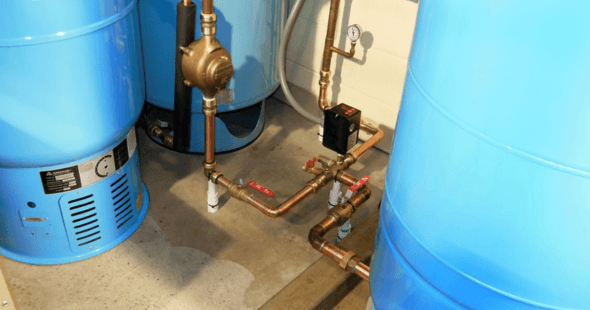Winter can be a challenging time for homeowners relying on well water. The plummeting temperatures can freeze your water source, leaving you without water when you need it most. Preventing your well water from freezing is crucial to ensure a consistent water supply throughout the cold season. This guide will provide practical tips to keep your well water flowing, even in the harshest winter conditions.
Insulate the Well Casing
The first line of defense against freezing is to insulate your well casing. Well casings are typically made of materials like steel or PVC, which offer little resistance to cold. By wrapping the casing in insulation material, you can significantly reduce the risk of freezing. Use specially designed well insulation blankets or foam insulation designed for outdoor use. Ensure the insulation covers the entire casing and is secured to prevent it from being blown away by the wind.
Install a Well Heater
For regions experiencing extremely low temperatures, installing a well heater can be a lifesaver. These devices are designed to keep the area around the well and the pipes warm enough to prevent freezing. Ensure the heater is designed for outdoor use and is safe to operate in close proximity to water. Always follow the manufacturer’s installation and safety instructions to avoid any risk of fire or electrical hazards.
Use Heat Tape on Exposed Pipes
Any pipes exposed to the outside air are at risk of freezing. Applying heat tape can provide the necessary warmth to keep water flowing. Heat tape, also known as heat cable, is easy to install and can be wrapped around the pipes. Once plugged in, it emits a low level of heat sufficient to prevent freezing. Ensure the heat tape you choose is suitable for use with water pipes and follow the installation instructions carefully.
Bury Pipes Below the Frost Line
One of the most effective long-term solutions to prevent freezing is to ensure that all water pipes leading to and from your well are buried below the frost line. The frost line is the depth to which the ground freezes in winter, and it varies by geographical location. Burying pipes below this line ensures they remain in an area where temperatures stay above freezing, reducing the likelihood of ice formation.
Keep a Steady Drip
Allowing a faucet to drip slightly during extremely cold weather can keep water moving through the pipes, which helps prevent freezing. While this method may slightly increase your water bill, it can be a simple and effective way to prevent a frozen water line. Just be sure to capture the water for use in other household tasks to avoid waste.
Regular Maintenance
Regular maintenance is key to preventing well freeze-ups. Before winter sets in, inspect your well system for any cracks, leaks, or other signs of damage that could be exacerbated by freezing temperatures. Repair any damages you find promptly. Additionally, ensure that your well cap is securely in place and insulated to prevent cold air from entering the well shaft.
Emergency Preparedness
Despite all precautions, sometimes freezing can occur. Have a plan in place for thawing your pipes safely if they do freeze. Never use an open flame or high heat, as this can damage the pipes or create a fire hazard. Instead, use a hair dryer or heat lamp to gently thaw the frozen section. If you’re unsure or the problem persists, call a professional plumber experienced with well systems.
Conclusion
Keeping well water from freezing during the winter requires a combination of preparation, maintenance, and vigilance. By insulating your well casing, installing a well heater, using heat tape, burying pipes below the frost line, keeping a steady drip, and conducting regular maintenance, you can ensure a continuous water supply throughout the cold months. Remember, prevention is key to avoiding the inconvenience and potential damage caused by frozen well water. Stay warm and hydrated!

